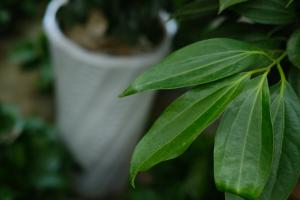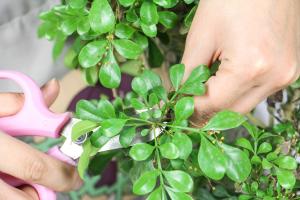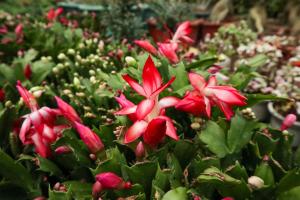How to Take Care of a Potted Zebra Plant
The Zebra Plant, or Calathea Zebrina, is a beautiful and distinct plant, native to Brazil. Its striped leaves are a popular addition to any indoor garden, but taking care of it can be tricky. Here are some tips on how to keep your potted Zebra Plant healthy and thriving.
Light
The Zebra Plant requires bright, indirect sunlight. Too much direct sunlight can scorch its delicate leaves, while too little light can make the leaves lose their stripes. Place your potted plant near an east-facing window or a shaded south-facing window. If you notice that the plant's leaves are fading, move it to a brighter spot.
Watering
When it comes to watering, the Zebra Plant is a bit of a diva. It prefers moist soil but will not tolerate being waterlogged. Make sure that the soil is always damp, but not soggy. A good rule of thumb is to water the plant once a week, but this may vary depending on the humidity of your home. You can also place a tray of water near the plant to increase the moisture in the air.
Humidity
The Zebra Plant thrives in high humidity. If you live in a dry climate, you may need to supplement the humidity in your home. You can do this by misting the plant with a spray bottle or placing a humidifier nearby. Another option is to place the pot on a tray filled with pebbles and water. As the water evaporates, it will help to increase the humidity around the plant.
Temperature
The Zebra Plant prefers temperatures between 60 and 75 degrees Fahrenheit. It does not tolerate extreme changes in temperature or being exposed to cold drafts. Avoid placing the plant near air conditioning units, open windows, or doors that lead outside. If the temperature drops, you can cover the plant with a cloth or move it to a warmer spot.
Soil and Fertilizer
The Zebra Plant prefers well-draining soil that is rich in organic matter. You can use a soil mix that contains peat moss, perlite, and vermiculite. Avoid using heavy or compacted soil, as this can prevent water from draining properly. Additionally, you can fertilize the plant every two to three months with a balanced fertilizer to help it thrive.
Pest Control
The Zebra Plant is not immune to pests, and it can be susceptible to spider mites, mealybugs, and scale insects. Regularly inspect the plant for any signs of infestation, such as discolored leaves or small insects. If you notice any pests, you can wash them off with a mild soap solution or use an organic insecticide to get rid of them.
In conclusion, taking care of a potted Zebra Plant requires attention to detail and a bit of patience. By following these tips and providing your plant with the right conditions, you can enjoy its beautiful striped foliage for years to come.

 how many times do yo...
how many times do yo... how many planted tre...
how many planted tre... how many pine trees ...
how many pine trees ... how many pecan trees...
how many pecan trees... how many plants comp...
how many plants comp... how many plants can ...
how many plants can ... how many plants and ...
how many plants and ... how many pepper plan...
how many pepper plan...






























